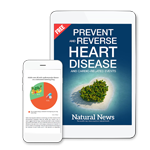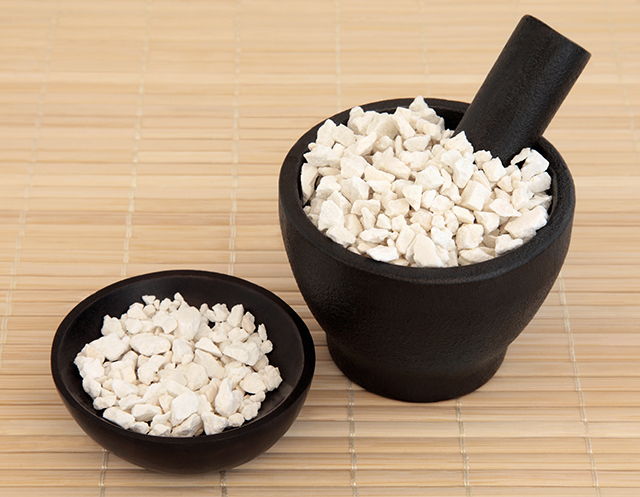Do you have enough vitamin D? Recent breakthrough allows testing from human hair
07/18/2019 / By Stephanie Diaz

More and more people are becoming deficient in vitamin D. Estimates suggest that over one billion people have this problem. Currently, people get tested for vitamin D deficiency using blood tests, which can be painful. These blood tests also require special equipment and the expertise of a trained medical practitioner. However, scientists have found a way to measure vitamin D levels in the body using hair as sample.
Vitamin D is a fat-soluble vitamin that plays an essential role in many physiological process, such as bone formation and brain function, among others. Vitamin D deficiency is linked to reduced bone density, cardiovascular diseases, diabetes, cancer, and depression.
Hair analysis can show a person’s vitamin D status over several months
A study published in the journal Nutrients reported a novel innovation for vitamin D testing. While blood tests can only measure current levels of vitamin D, the researchers discovered that human hair samples can provide much more information. They can reveal not only the current amount of vitamin D in the body, but also how much vitamin D a person has had the previous months.
“This study presents the first step towards the development of a novel test for assessing vitamin D status over time. The idea is that vitamin D is being deposited continuously in the hair as it grows; more might be deposited at times when vitamin D concentration in the blood is high, and less when it’s low. Therefore, test based on the hair sample might be able to give doctors a measure of vitamin D status over time — if hair is long enough, this even might be over a few years!” said lead author Lina Zgaga.
 | Discover how to prevent and reverse heart disease (and other cardio related events) with this free ebook: Written by popular Natural News writer Vicki Batt, this book includes everything you need to know about preventing heart disease, reversing hypertension, and nurturing your cardiac health without medication. Learn More. |
The researchers noted that more studies are needed to determine the exact correlation of vitamin D levels in the blood and hair. They also see a need to investigate different factors that can affect the results of vitamin D analysis, such as hair color, thickness, and the use of hair products.
The researchers are hopeful that their discovery can be used in the future to assess vitamin D levels in historical samples from archaeological sites.
“It could be possible to, for the first time, [to] assess the vitamin D status of historical populations — Elizabethans, Viking, Celtic, Roman, ancient Chinese, Egyptian,” said Eamon Laird, co-author of the study.
Moreover, the results of hair analysis could serve as a record of a person’s long-term vitamin D status. This information can then be used to make new strategies in order to maintain adequate levels of vitamin D in the body.
Ways to increase vitamin D levels in the body
According to the National Academy of Medicine, a person needs 600-800 International Units (IU) of vitamin D in order to maintain proper immune, digestive, circulatory, and nervous system function. While vitamin D supplements are widely available, there are more natural ways to get vitamin D. Here are a few tips:
- Spend time under the sun: Vitamin D is also known as the “sunshine vitamin” because the body can synthesize this nutrient when the skin is exposed to sunlight. Fifteen minutes of sun exposure every day is enough to cover the daily requirement for vitamin D. (Related: Vitamin D: How to Determine Your Optimal Dose.)
- Eat more fatty fish and seafood: Fatty fish and seafood are excellent sources of vitamin D. In fact, a single serving of salmon can provide up to 50 percent of the daily dietary requirement. Not only that, eating fatty fish and seafood can also boost your intake of omega-3 fatty acids.
- Include mushrooms in your diet: Mushrooms are the only plant-based sources of protein. Just like humans, mushrooms possess the ability to produce vitamin D when exposed to sunlight. Wild mushrooms, like maitake, have as much as 2348 IU vitamin D per 100 gram serving or 300 percent of the reference daily intake (RDI).
- Consume more eggs: One of the best ways to boost vitamin D levels is by eating eggs, including the yolk. Eggs from free-range chickens contain 20 percent of the RDI for vitamin D. Moreover, chickens fed fortified grains can produce eggs that have vitamin D levels equivalent to 100 percent of the RDI.
For more news and stories about vitamin D, visit VitaminD.news.
Sources include:
Tagged Under: blood testing, breakthrough, clean food, discoveries, eggs, fatty fish, functional food, hair, innovation, Mushrooms, research, sun exposure, sunshine vitamin, vitamin D, vitamin D analysis, vitamin D sources, vitamin D testing



















